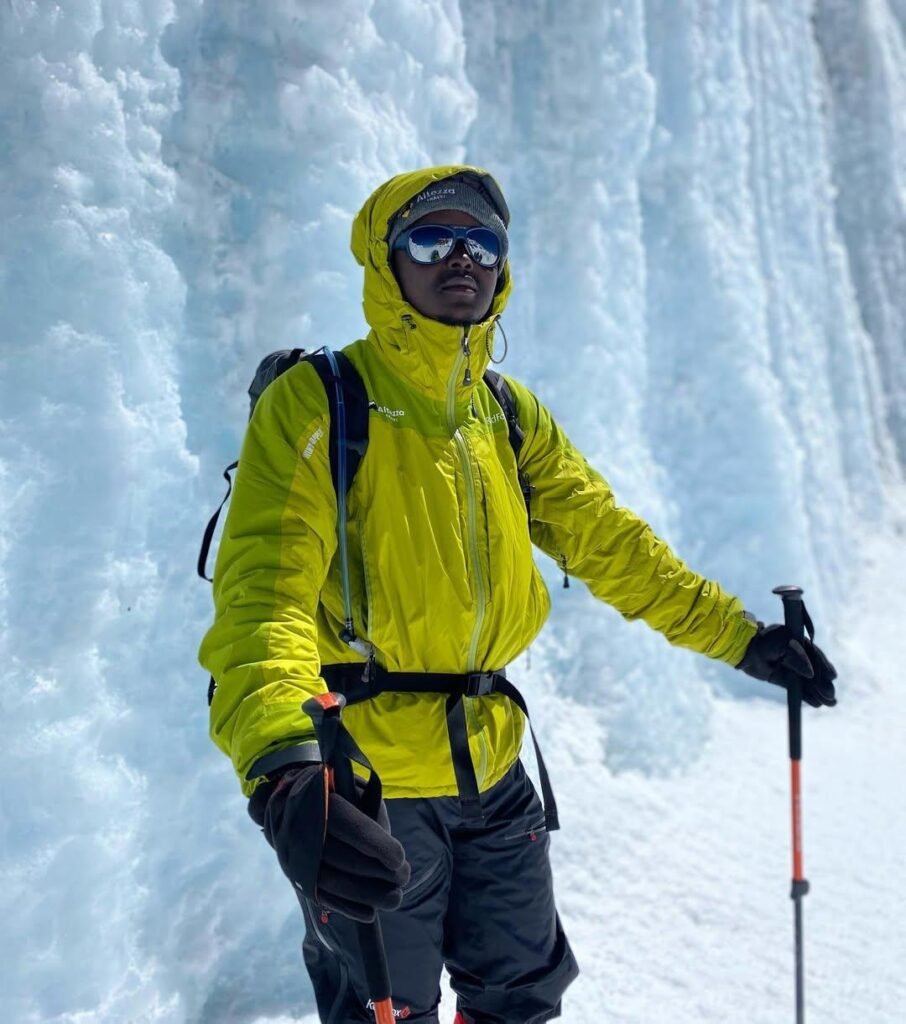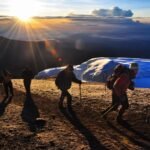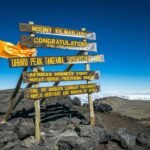How long does it take to climb Kilimanjaro ? : Travelers planning to climb Mount Kilimanjaro frequently ask how long does it take to climb Mount Kilimanjaro?
How long does it take to climb Kilimanjaro : It takes five to nine days in order to reach the Mount Kilimanjaro Summit and then descend to the finishing point. The more days spent on Mount Kilimanjaro the more likely you will successfully summit, as you will become more acclimatized to the altitude and will be less fatigued.

How long does it take to climb Kilimanjaro ? : Trekkers who spend only 5 days have the lowest Summit success rate.
Trekkers who spend 8 or 9 days have a much better chance of summiting. Read more about the best routes to climb Kilimanjaro and the days they take.
Kilimanjaro has been climbed from the park gates to the summit in a little over just 5 hours, and yet the Royal Geographical Society suggests that trekkers should not spend less than 10 days reaching the summit? So, how long does it usually take and what is safe?
Having assisted more than 10,000 trekkers to the summit of Kilimanjaro, I came to learn years ago that it is impossible to prescribe a specific practice for all climbers, and that the amount of time that is safe to spend ascending and descending Kilimanjaro depends on a number of factors – most significantly of which being whether the climber has recently been to high altitude or, if not, whether their bodies have experienced altitude previously, albeit, long enough ago that they are no longer acclimatised from that experience.
I have found in my own case that I need around 3 days to reach the summit of Kilimanjaro comfortably, but I believe that this is because I have been to high altitude so many times that my body has become accustomed to adapting quickly.
How long does it take to climb Kilimanjaro ? : Exceptions to the Alleged “Rules”
Additionally, though I have never read of such a phenomenon in any scientific journal – though the accounts of Noel Odell’s experiments above the North Col on Mount Everest in the 1920’s would seem to corroborate my claim – I have noticed that it is possible (though definitely not recommended) to effectively “sneak up” on the mountain and ascend quickly, provided that you are able to descend very quickly to a safe altitude after only a very short exposure.
I discovered this phenomenon on 27th March 2000, when I climbed Kilimanjaro for the very first time. I was interested to discover whether it was possible to climb Kilimanjaro to the summit from the park gate in under a day without acclimatisation. I have the time recorded somewhere, though not immediately to hand, and I think the time it took me to reach the summit from Marangu Gate was some 12 hours and 47 minutes. It was a very uncomfortable experience and I recall hallucinating somewhat, though never feeling unsafe, and knowing that were I to get into trouble I could immediately descend and my symptoms would ameliorate within a loss of just some 300 – 500 vertical metres. But I think the reason that I was able to do this is because – and substantial subsequent experience has corroborated this – the worst effects of AMS have a delayed onset and usually occur when your respiratory drive is relatively depressed.
But notwithstanding these and similar experiements, for those who are neither acclimatised, nor have had significant past experience of trekking at altitude, as a company we have come to find that the optimum length of a Kilimanjaro climb – to include the ascent and descent – is some 7-8 days, with the final day and a half of this time being spent descending.
How long does it take to climb Kilimanjaro ? : Our Lemosho Route
Our unique variation on the Lemosho Route conveniently offers both schedules, the 7 and 8 day. If able to spend 8 days on Kilimanjaro, that would tend to be our recommendation generally, so as to err on the side of caution in the event tat the guide judges that you are not acclimatising at the hoped-for rate, though if only 7 days is available, we would still be confident that some 19 out of every 20 trekkers should expect to summit with us.
How long does it take to climb Kilimanjaro ? : How long does it take to climb Mount Kilimanjaro on each route?
There are a total of six different routes you can use to climb Mount Kilimanjaro.
The shortest possible way to the summit is by the Marangu or the Umbwe Route. These routes can be completed in 5 days (but we don’t recommend it for most hikers).
The longer treks, Lemosho, Machame, Rongai or Northern Circuit route take 6-10 days.
The main reason you’d want to take a longer route is to give your body time to acclimatize to the altitude, but there are other considerations as well.
Unless you are very fit, covering the same amount of ground in a shorter time-frame can increase your chances of fatigue and injury – and compromise your enjoyment of the environment.
Climbing Kilimanjaro recommends Trekkers who have a flexible schedule to consider a longer route or build-in one or two acclimatization days and have an easier time reaching the summit.
Each route is varied in the duration on the mountain, the types of accommodation, the level of difficulty, the type of scenery, and other factors.
How long does it take to climb Kilimanjaro ? : The table below lists each route, sorted by the number of days usually taken on each route.
| Route | Number of Days | Route Length |
| Marangu | 5 | 64 kilometres (40 mi) |
| Umbwe | 6 | 37 kilometres (23 mi) |
| Machame | 6 or 7 | 65 kilometres (23 mi) |
| Rongai | 6 or 7 | 49 kilometres (30 mi) |
| Lemosho | 7,8 or 9 | 66 kilometres (35 mi) |
| Northern Ciercuit | 8 or 9 | 66 kilometres (35 mi) |









Your point of view caught my eye and was very interesting. Thanks. I have a question for you.
Your point of view caught my eye and was very interesting. Thanks. I have a question for you.
Thanks for sharing. I read many of your blog posts, cool, your blog is very good.
Can you be more specific about the content of your article? After reading it, I still have some doubts. Hope you can help me.
I don’t think the title of your article matches the content lol. Just kidding, mainly because I had some doubts after reading the article.
Your article helped me a lot, is there any more related content? Thanks! https://accounts.binance.info/en-IN/register-person?ref=UM6SMJM3
Your article helped me a lot, is there any more related content? Thanks!
Your article helped me a lot, is there any more related content? Thanks!
There’s a quiet elegance in the way you express your thoughts, each word chosen with such care and precision.
Thank you for your sharing. I am worried that I lack creative ideas. It is your article that makes me full of hope. Thank you. But, I have a question, can you help me?
I don’t think the title of your article matches the content lol. Just kidding, mainly because I had some doubts after reading the article.
Thanks for sharing. I read many of your blog posts, cool, your blog is very good. https://www.binance.info/register?ref=P9L9FQKY
Your article helped me a lot, is there any more related content? Thanks! https://www.binance.com/tr/register?ref=W0BCQMF1
Your article helped me a lot, is there any more related content? Thanks! https://www.binance.info/lv/register?ref=B4EPR6J0
Thanks for sharing. I read many of your blog posts, cool, your blog is very good. https://www.binance.info/tr/register?ref=W0BCQMF1
I don’t think the title of your article matches the content lol. Just kidding, mainly because I had some doubts after reading the article.
Thank you for your sharing. I am worried that I lack creative ideas. It is your article that makes me full of hope. Thank you. But, I have a question, can you help me?
Your point of view caught my eye and was very interesting. Thanks. I have a question for you.
Can you be more specific about the content of your article? After reading it, I still have some doubts. Hope you can help me.
Your point of view caught my eye and was very interesting. Thanks. I have a question for you.
Can you be more specific about the content of your article? After reading it, I still have some doubts. Hope you can help me. https://accounts.binance.com/fr-AF/register?ref=JHQQKNKN
Thank you for your sharing. I am worried that I lack creative ideas. It is your article that makes me full of hope. Thank you. But, I have a question, can you help me? https://www.binance.com/ph/register?ref=B4EPR6J0
Thanks for sharing. I read many of your blog posts, cool, your blog is very good.
Thank you for your sharing. I am worried that I lack creative ideas. It is your article that makes me full of hope. Thank you. But, I have a question, can you help me?
Can you be more specific about the content of your article? After reading it, I still have some doubts. Hope you can help me.
I don’t think the title of your article matches the content lol. Just kidding, mainly because I had some doubts after reading the article.
Thanks for sharing. I read many of your blog posts, cool, your blog is very good.
Thanks for sharing. I read many of your blog posts, cool, your blog is very good.
Can you be more specific about the content of your article? After reading it, I still have some doubts. Hope you can help me.
I don’t think the title of your article matches the content lol. Just kidding, mainly because I had some doubts after reading the article.
Thank you for your sharing. I am worried that I lack creative ideas. It is your article that makes me full of hope. Thank you. But, I have a question, can you help me?
Thanks for sharing. I read many of your blog posts, cool, your blog is very good.